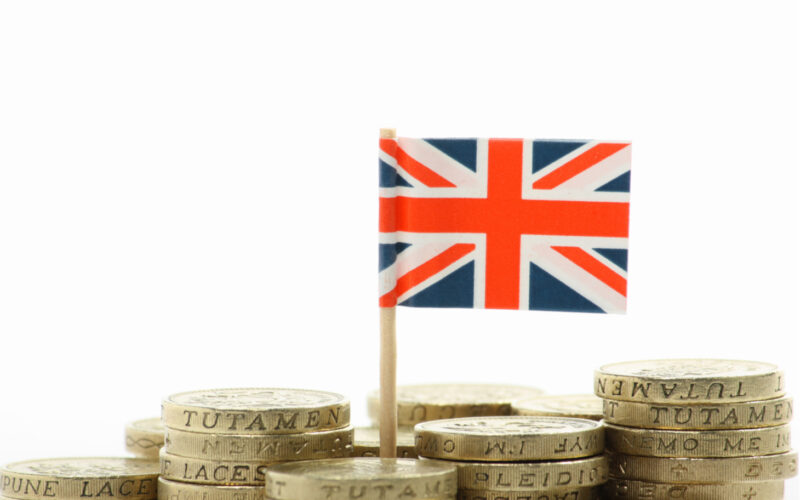Yesterday we looked into the post-Brexit economic boom which has forced the Bank of England to raise its interest rates ahead of other major central banks around the world. But I warned you that this would all end in tears.
Interest rate hiking cycles almost always do. They eventually pop the bubble that the preceding excessively low interest rates inflated in the first place.
Just as no government institution knows the optimal price of coal, oil or oranges, central banks don’t know the right interest rate. And when they get it wrong, you get the up and down cycle in the economy of inflation and debt crises.
Well, minutes from the US Federal Reserve meetings, and comments from the top Latvian central banker, who sits on the European Central Bank governing council, have put precisely this fear into the market. Bloomberg has the story:
A joint drop in equities and bonds is hitting exchange-traded fund investors with the worst start of a year in a decade.
Investors who subscribe to the moderate-risk portfolio strategy of 60% stocks and 40% bonds have been walloped this week. Treasury yields spiked higher on concerns the Fed will raise interest rates and reduce its bond holdings, increasing the cost of capital throughout the economy. The specter of interest rate hikes also fueled a rout in highly valued tech stocks, whose future earnings become less valuable when rates increase.
The iShares 20+ Year Treasury Bond ETF (TLT) fell in each of the first three sessions, driving its 2022 losses to 3.6%. Meanwhile, the SPDR S&P 500 ETF Trust (SPY) erased its year-to-date gains Wednesday.
Combined, their 2022 losses reached almost 5%, marking the worst start to a year since TLT was created in July 2002.
The point here is that, just as lower interest rates goose the financial markets, higher interest rates pull the rug out from underneath them. And inflation may be forcing the central bankers’ hand, despite the consequences of their actions for asset prices.
The trouble with an inflationary crisis is that there are precious few places for investors to hide. Just as the rising tide lifts all boats when interest rates are being lowered, the tide is now on the ebb for stocks, bonds and other asset classes.
The Bloomberg article refers to the traditional “safe” portfolio of 60% stocks and 40% bonds. This is designed to reduce volatility because either stocks or bonds tend to perform well at any given time.
But tighter monetary policy to rein in inflation can undermine both asset classes. Just as the past few years of extremely loose monetary policy buoyed both asset classes, making the rich richer and those without access to credit or assets poorer in relative terms.
But this helpful public service can’t go on forever. Inflation is the consequence of overdosing on monetary policy fixes on the way up. But when it breaks out, central bankers find themselves in a dilemma. They must somehow un-spike the punch bowl which they’ve been pouring ever harder liquor into.
There are two key question investors face. Do central bankers have the… guts to raise interest rates to rein in inflation, or not? And, if they do, how high do rates need to go before the crash begins?
To put this into context, consider the last few decades of financial history. Since the 1980s, each upcycle in interest rates was punctuated by a crisis, which in turn needed ever lower interest rates to overcome.
And each peak in rates was lower than the last. That’s because debt levels have been rising, so it took less high interest rates to pop the bubble each time. This helps to explain the 40-year downtrend in interest rates.
All this was a global phenomenon, but US interest rates were the key, because the US dollar is the global reserve currency in which all prices are measured in the end.
Given that the world has gone on a spectacular debt binge during the pandemic’s extremely low interest rates, the current debt levels suggest that interest rates won’t have to move far before a crash or crisis this time.
Indeed, the mere prospect of higher interest rates was enough to cause trouble for stocks and bonds, as the Bloomberg quote above pointed out. The same happened in 2018, when inflation was still in Pandora’s box.
Investors need to ponder whether they want to stick around to find out how high rates need to go before a new crisis. To use yet another metaphor, central bankers have lit a fuse and the powder room is filled with companies and countries that have too much debt to handle. If we know a rate hike cycle ends in a bust, do you want to find out when?
But what of the other possibility? What if inflation is never reined in?
If you look back through history beyond the 1980s and the general downtrend in interest rates since then, you see that this is what eventually happens to financial systems. Currencies eventually fail when they are abused. And by fail I mean that they lose value relative to goods and services that people and businesses are buying. That is the essence of inflation.
That’s why, historically speaking, money was considered to be gold or silver, and the human constructions of money on top of this were mere credit – the promise to pay gold or silver in the end.
The devaluation of money (inflation) in such times was obvious. Your money got you less and less precious metal over time.
These days, it’s less obvious, but just as true.
The last 50 years of monetary history may be just another episode of trying to abandon this simple truth. It may end up being seen as yet another doomed experiment at fiat money.
And, in the scale of the history of money, it would be perfectly normal for us to return to gold in some form or another. That is the logical outcome when people stop trusting central bankers, as they have so often in the past.
So, we’re either in for inflation getting out of hand, or another bust triggered by tight monetary policy.
What really matters is this: the investor’s answer to both scenarios is the same.
Gold is one of the very few assets that protects from both inflation and a financial crisis. That’s because it preserves wealth during inflation, while also being outside the financial system (which, in turn, means that it should be counterparty-risk free).
Gold cannot be mismanaged like a company you own shares in, nor can it be defaulted upon like a bond. However, it does matter how you own exposure to gold… (hint, hint).

Nick Hubble
Editor, Fortune & Freedom



